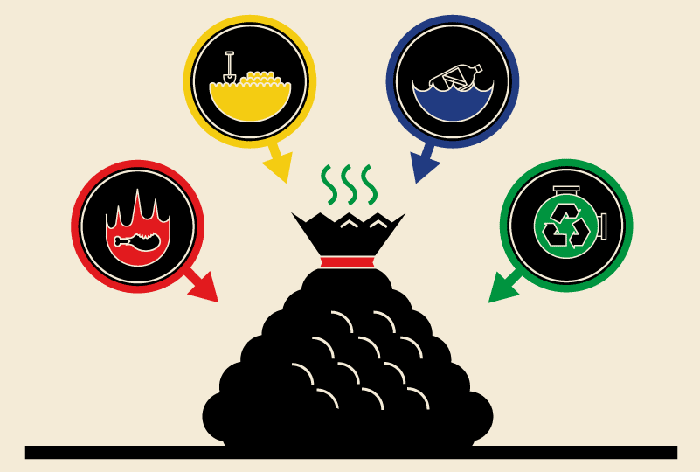Air pollution is an issue in many parts of the world. Do you ever wonder how clean the air you breathe actually is?
A few years ago, the Mauna Loa Observatory (MLO) in Hawaii recorded the atmosphere’s global concentration of carbon dioxide to be four hundred parts per million (ppm).
This is the first time such record levels have been reached in recorded history, and scientists have reasonable evidence to believe that the Earth hasn’t reached these levels in millions of years.
What’s more, the rate of increase since researchers began measuring carbon dioxide levels in 1955 has many of these scientists alarmed and worried about the future. While it is true that carbon dioxide is emitted naturally, human emissions have upset the balance in a huge way.
Still, in some places it’s hard to see that we’re doing any real harm — changes in levels of an invisible gas go unnoticed by human eyes as we go about our lives.
When we think of air pollution we tend to conjure up images of citizens wearing surgical masks in China, parts of which regularly suffer from red alert levels of dense smog.
Why You Need to Care
Air pollution is an issue in many parts of the world, especially in the United States. The American Lung Association reported in 2013 than 44% of people in the U.S. were living in counties where air pollution levels are often at dangerously high levels for breathing.
The latest report reveals that those numbers are even higher.
The report used data from measurements of ozone levels, short-term particles, and year-round particles — eight percent of the population lives in areas where they are exposed to dangerous levels of all three types of pollution at once.
Ozone levels are strongly related to exhaust from cars, which typically increases in more densely populated areas, meaning that the nation’s largest cities are also its biggest polluters.
Southern California is sadly home to many cities where all these types of air pollution are prevalent, winning the top five spots on three separate lists recording the highest levels of air pollution — though they’re really not winning at all.
The state’s most polluted cities include Los Angeles-Long Beach, Fresno-Medara, Visalia-Porterville, Bakersfield-Delano, Hanford-Corcoran, Modesto and Merced. Other cities including New York, Chicago, Las Vegas and Philadelphia have also more frequently reported days with high ozone levels in recent years.
The effects of air pollution on human life are numerous and negative. Continuous exposure to polluted air like that experienced by Americans living in these cities puts them at increased risk for developing asthma and other lung diseases, stroke, heart disease and cancer.
Making the Move Toward Cleaner Air
In the face of climate change and a public health crisis, communities affected by heavy air pollution are responding. People, businesses, and governments alike are taking initiatives to reduce the amount of carbon that they’re producing.
In Southern California, some companies are spending millions to reduce air pollution.
Shipping companies such as Matson Navigation Co. are turning to electric power for their diesel-fueled ships when they come to the Port of Long Beach. SA Recycling, which shreds vehicles and recycles the metal, reportedly invested in a regenerative thermal oxidizer to eliminate volatile organic compounds from its Port of LA shredder.
Air pollution control agency South Coast Air Quality Management District now uses fully-electric trucks for delivery thanks to federal funding to reduce diesel emissions.
Businesses also turn to technological solutions like carbon dioxide absorbers to help reduce their carbon footprints. Adsorbent material traps pollutant molecules, and chemical adsorption is currently believed to be one of the most effective methods of capturing carbon dioxide.
Another technological breakthrough made in California is the production of a cheap plastic material that sucks carbon dioxide from the air. Future applications for the material may include artificial trees and batteries.
Check out the video above to see the top 10 countries with the highest rates of pollution.
Since 1970, when the Clean Air Act was passed in 2010, the Environmental Protection Agency reported that air pollution levels in the U.S. have been cut by more than 41 percent.
We still have a long way to go, but together, people can work to improve the quality of air all over the U.S. and the world.




